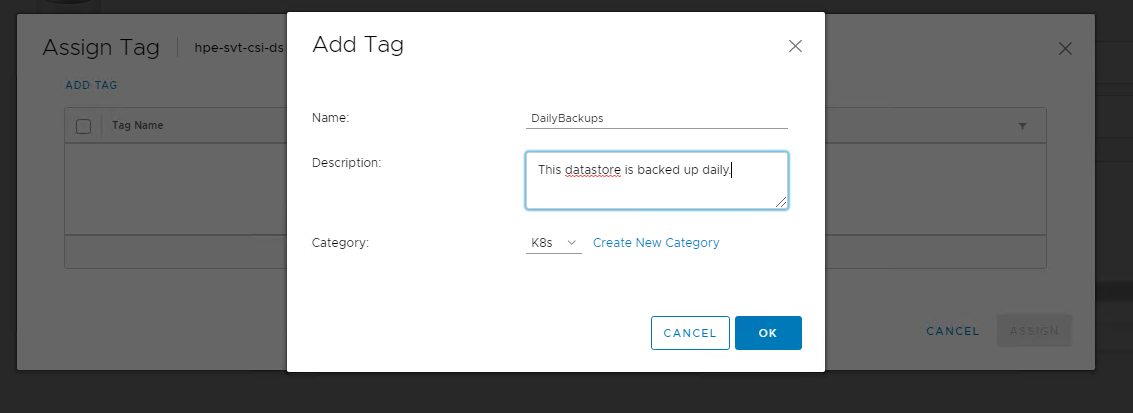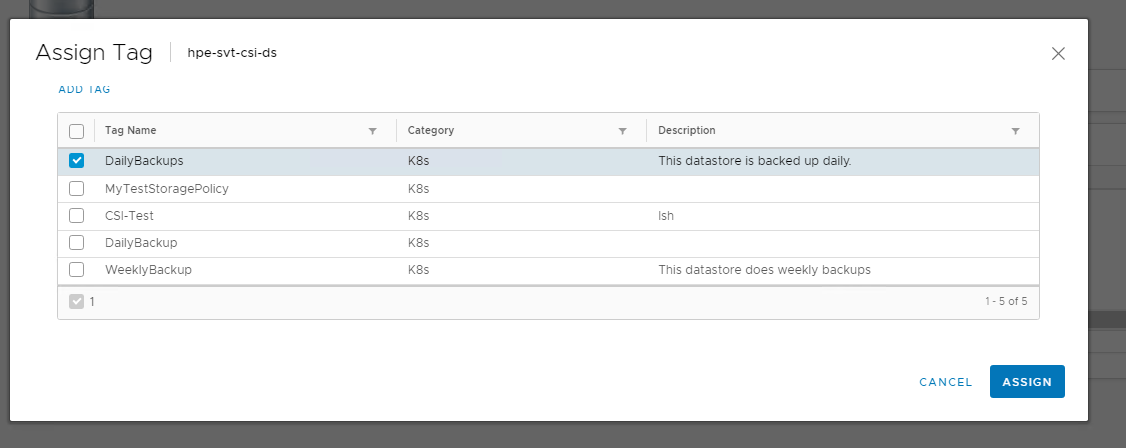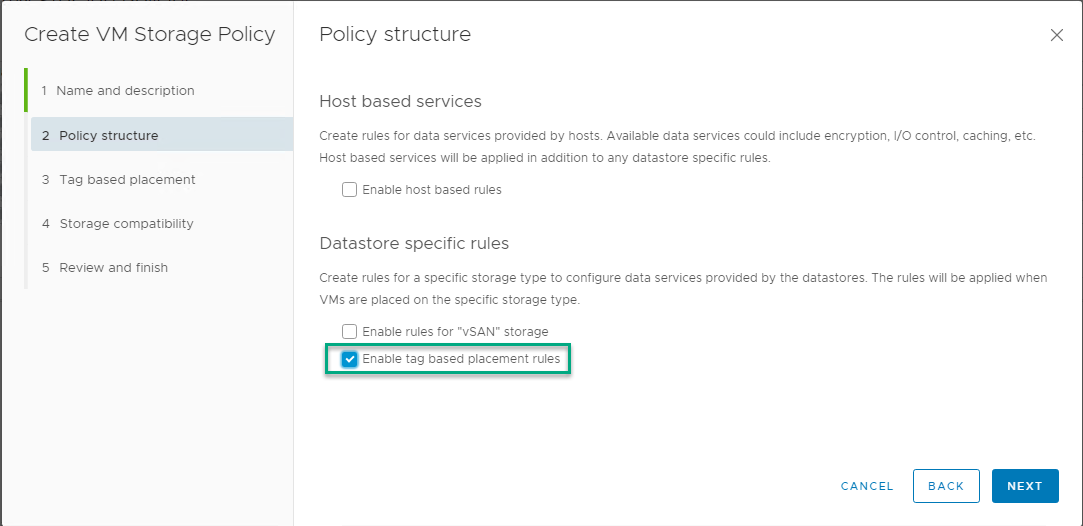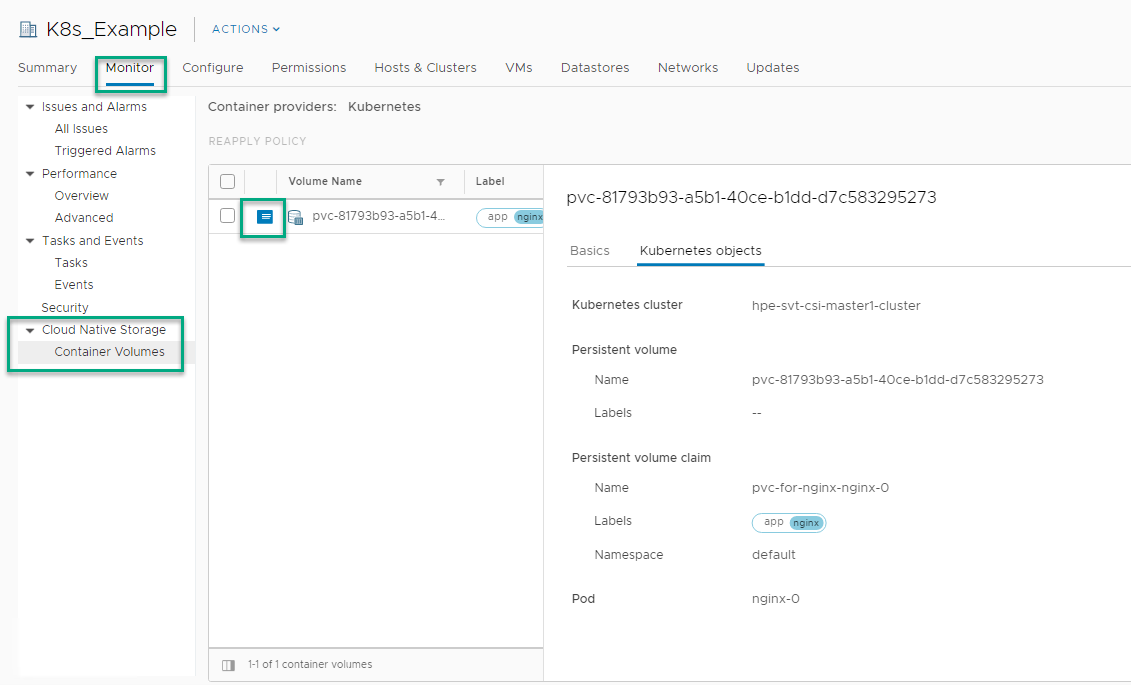Configure the HPE SimpliVity datastore to support persistent volumes
A storage policy can be used to restrict persitent volume provisioning to a subset of HPE SimpliVity datastores. Since HPE SimpliVity datastores are NFS datastores, the vSphere storage policy must use tag based placement. You use the vSphere client to define the tag, assign the tag to the HPE SimpliVity datastore, and to create a storage policy that uses the tag. Once that is done, you update those values in the Kubernetes StorageClass.yaml.
Tag the datastore
Use the vSphere client to access the Tags & Custom Attributes wizard. Create a new tag and supply a meaningful name and description that will help you identify the datastore.

Next, browse to the HPE SimpliVity datastore, and assign the tag to it. Right click the datastore and select Tags & Custom Attributes > Assign Tag.

Create the storage policy
Use the Create VM Storage Policy wizard to create the storage policy. (Go to Menu > Policies and Profiles).
Make sure to select Enable tag based placement rules.

Use the same tag that you assigned to the HPE SimpliVity datastore.

Define a Kubernetes StorageClass
After you create the storage policies, create a StorageClass.yaml that maps to this storage type.
You can specify either the datastoreurl or the storagepolicyname. If you specify both, the datastoreurl takes precedence.
To get the value for the datastoreurl parameter:
- Navigate to the datastore.
- Click the Summary tab.

-
Copy the URL value and add it to the StorageClass.yml file as shown below:
kind: StorageClass apiVersion: storage.k8s.io/v1 metadata: name: simplivity-sc annotations: storageclass.kubernetes.io/is-default-class: "false" provisioner: csi.simplivity.hpe.com parameters: # datastoreurl and storagepolicyname are mutually exclusive. If both are # provided, then the datastoreurl is preferred over storagepolicyname datastoreurl: "ds:///vmfs/volumes/208f9178-aadd745f/" # Optional Parameter fstype: "ext4"This an example of the yaml with the storagepolicyname:
kind: StorageClass apiVersion: storage.k8s.io/v1 metadata: name: simplivity-sc annotations: storageclass.kubernetes.io/is-default-class: "false" provisioner: csi.simplivity.hpe.com parameters: # datastoreurl and storagepolicyname are mutually exclusive. If both are # provided, then the datastoreurl is preferred over storagepolicyname storagepolicyname: "DailyBackups" # Tag on selected datastore, from vCenter # Optional Parameter fstype: "ext4"
Monitor persistent volumes in vSphere client
Use the vSphere client to see how Kubernetes has provisioned the HPE SimpliVity datastore that you mapped to your Kubernetes cluster.
-
Navigate to the vCenter Server instance, a data center, or datastore.
-
Click the Monitor tab, then click Container Volumes under Cloud Native Storage to view the details about the persistent volumes that are consuming storage.
-
Click the Details icon to access the details about the Kubernetes objects associated with the persistent volume.
